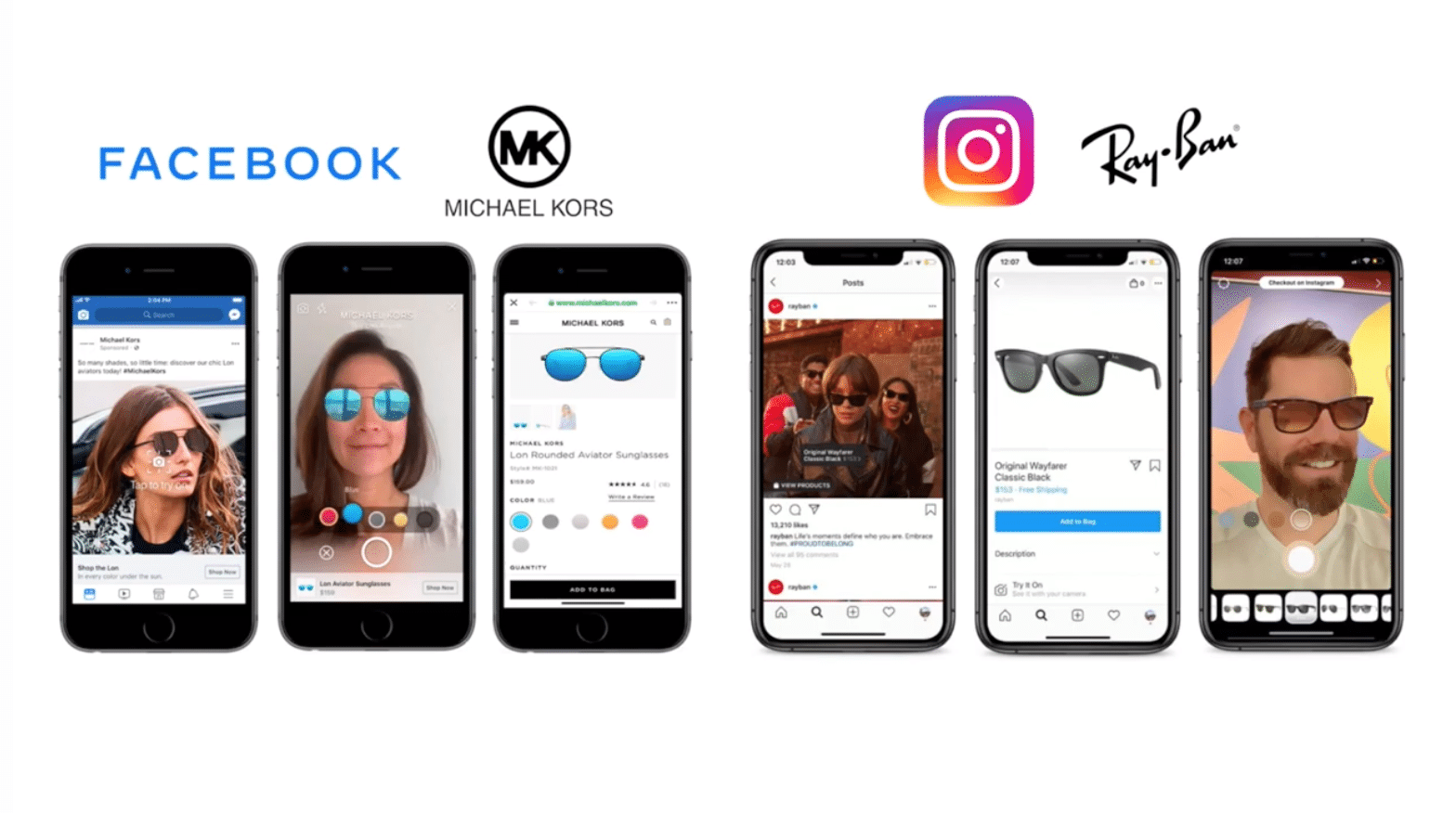
“Trendline” is AR Insider’s series that examines trends and events in spatial computing, and their strategic implications. For an indexed library of spatial computing insights, data, reports and multimedia, subscribe to ARtillery PRO.
For the past decade, Facebook has been on a slow & steady path towards facilitating e-commerce. That includes local, marketplaces and in-feed buy buttons. Though it’s been effective with Pages and paid advertising, lower-funnel direct commerce remains underdeveloped.
The most successful play so far is Instagram’s shopping and transactional use case, including buy-button integrations and direct commerce tools for brand advertisers. That’s on a collision course with AR, as commerce + visualization approach their peanut butter and chocolate moment.

Digital Storefront
With that backdrop, Facebook took another step towards commerce last week with the launch of Shops. These will piggyback on existing Facebook Pages or Instagram profiles, allowing SMBs and larger companies turnkey functionality for full-fledged e-commerce digital storefronts.
SMBs can activate Facebook Shops for free, then upload product catalogs. They can then personalize the UX with a cover image, accent colors and other customization. Instagram VP of Product Vishal Shah told Techcrunch that one million businesses have already signed up.
Shops could also serve as connective tissue in e-commerce efforts across News Feed, Instagram, Messenger, WhatsApp and Portal. Ad formats endemic to these channels — video, display, Instagram Explore, Messenger threads — can be linked to Shops to close the transactional loop.
To pull this off, Facebook is working with e-commerce players like Shopify, WooCommerce and Channel Advisor. These integrations will allow for, say, Shopify-run merchants to have an auxiliary channel on Facebook that ties into their existing inventory management and shipping.

Altruism & Opportunity
Not yet involving AR, Facebook will monetize Shops in a few ways. Though they’re free to set up, Facebook will take affiliate fees on transactions. Indirectly, it’s also hoping that the commerce functionality will drive more demand for Facebook ads to drive traffic to these digitals shops.
In a Facebook Live session last week, Mark Zuckerberg positioned this as a move that was prompted by Covid-19’s local business impact. That’s aligned with the logical pivot across the tech sector — in product development and venture funding — towards all-things eCommerce.
“I do think we’re going to continue living more of our lives online and doing more business online,” said Zuckerberg.” This follows several Facebook moves over the past 60 days to support SMBs. That includes new profile features that help them communicate to customers, and direct grants.
Like many moves we’ve been watching, this is part altruistic and part opportunistic. It certainly has a component of helping SMBs, but it also helps ensure they’ll survive to be future Facebook customers. And it smartly redirects the product road map to meet “new-normal” demand signals.

Collision Course
Back to the collision course of AR and commerce throughout the Facebook kingdom, Shops is aligned with that overall progression. The continued integration of buy buttons for brands and SMBs to sell products happens in parallel with Facebook’s ongoing elevation of AR.
We’ve been saying for a while that they’ll converge, which has already started to happen. Well-cited case studies like Michael Kors Facebook campaign had lower-funnel (transactional) results. But more can be done for payments integration that doesn’t bounce users to external sites.
The real magic will happen when integrations happen more seamlessly. For users that means product discovery, visualization, and transaction… all in the same place. Placing AR in users’ existing path in seamless and additive ways will be the name of the game for AR commerce.
Meanwhile, for brands and merchants — Facebook’s real constituent — deeper integrations will likewise compel them to adopt AR to boost conversion rates. This is already seen at the large brand level, as a feedback loop of effective AR implementation is causing many to double down.

Long Tail
But more scale could come from the long-tail of SMBs and mid-market brands, which is where Shops comes in. Like in past technological shifts, SMBs are mostly late adopters though. As we studied in a previous life, they’re often time-starved, tech-illiterate and need training wheels.
Facebook Shops could be just that, with low-friction ways to get SMBs comfortable with e-commerce. Easy onboarding — plus Covid-era factors pushing them into e-commerce — could accelerate that learning curve. Further down that evolutionary path comes AR.
Facebook’s starting point for that process will be 140 million business pages — most of which are SMBs — that can now easily become shops. The leap to AR could follow. As we’ve examined, AR will see the most success when integrated in the places people are already comfortable.
It could take a while for that to fully unfold for the small business universe. Facebook Shops is just one step in a long road towards AR commerce, and the value chain includes things like scalable 3D asset creation. Fortunately, Facebook has a proven stomach, and checkbook, for that journey.
Header image credit: Facebook, Inc.
